Before we dive deep into website personalization, let’s understand the human psyche.
And it begins with a universal truth. Humans have favorites. A favorite smartphone brand. A favorite online accessory brand or a favorite e-Commerce website.
We relish the sight of hefty discount coupons offered by our go-to shopping platform.
We feel special when restaurant servers are on a first-name basis with us and show us the latest delicacy on the menu before they show anyone else.
We celebrate when the latest smartphone that we’ve always wanted is back in stock in our preferred colors.
But what drives us to pick one brand over another?
Desirable products? Yes, but products can only make you shop, not stick.
What makes us stick is customer experience.
Brands are doing everything they can to provide bespoke customer experiences regarding streaming movies, taking courses, buying cars, getting insurance, trying on clothes, and browsing gadgets.
And website personalization is bang in the middle of all that action.
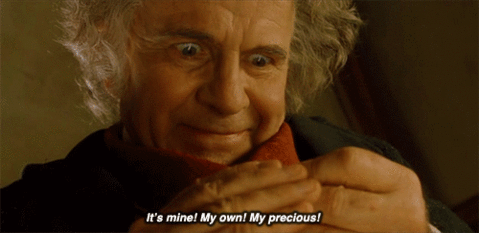
In this blog, we’ll look at how website personalization influences the e-Commerce market.
What does e-Commerce personalization mean?
Creating a tailored experience for users on an e-Commerce platform with user-generated data and business-oriented data is called e-Commerce personalization. Personalization can take place across various platforms. In an app, it’s called app personalization, and on a website, it’s called web personalization.
If done right, web personalization is a process of giving each user an individualized experience when they interact with a website – More like one website with a million versions.
For example, notice how no two users will ever have the same landing page on Amazon. They’re configured to look unique to each user.
This uniqueness is achieved when brands use on-site behavioral and user attributes to have micro and macro-level engagements with their customers.
On-site behavioral attributes include pages viewed, products added to cart, items wishlisted, etc. User attributes include name, gender, age, location, etc.
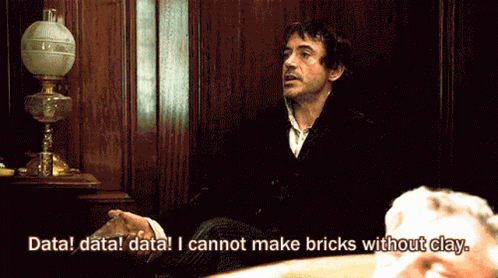
Contrary to popular belief, people don’t have any qualms about sharing first-party data with brands as long as the data collection is transparent and the customer experience is efficient. 70% of consumers reported feeling comfortable with personalization, provided that brands used THEIR data and not purchased data.
Additionally, despite economic challenges, nearly 70% of surveyed businesses plan to increase their investment in personalization, recognizing its potential to enhance customer engagement and drive business growth.
What is the importance of website personalization in e-Commerce?
It is important for the same reason we like coffee shops for offering beverages ‘on the house’ on our birthdays or anniversaries. These brands go the extra mile to recognize personal milestones and reward each user uniquely to make them feel special. Users who visit a brand’s website want to feel known and cared for. And, personalization helps to create an emotional connection between the brand and the customer, fostering loyalty and encouraging repeat purchases.
In light of the fierce competition in the market, consumers have many options to choose from. To not be a needle in a haystack, brands must make the user experience more and more memorable. When done right, personalized experiences go a long way toward increasing conversions.
Get this – 89% of businesses are investing in personalization, and 45% of shoppers prefer shopping on a website that offers personalized experiences. On the other hand, 66% of your customers feel that encountering generic or non-personalized content would make them look for alternatives and stop them in their tracks.
There are many solid reasons why web personalization just works like a charm in e-Commerce.
1. Higher conversion rate.
94% of companies witnessed a spike in conversion rates after they personalized their websites. When you help your users cut through the clutter, you guide them to what they are looking for. When they find what they’re looking for, you’ve just improved the chances of a sale by personalizing.
By optimizing content right down to product recommendations for a user, you are targeting their browsing habits, feeding their tastes, and aligning with their intent to lead them from the awareness stage to the purchase stage and, ultimately, to the repeat purchase stage. It also streamlines the customer journey, reducing friction and increasing the likelihood of a successful conversion.
2. Lesser bounce rate.
When companies don’t personalize customer experiences, it frustrates 76% of users. Fewer people abandon an e-Commerce website when they navigate a personalized homepage and stick around because they like what they see. A personalized website experience keeps visitors engaged and interested, reducing their chances of prematurely leaving the site.
Imagine landing on a page specially curated for the shopper. Everything is tailored to appeal to an individual, from localized content, language, recommendations, purchase history, currency, and shipping costs.
3. Better understanding of your customers.
80% of users aremore likely to engage with a business that offers personalized experiences. We are gravitating toward a cookieless world. Companies are doing away with third-party data and embracing first-party data (data consented to by users and collected by companies).
First-party data offers richer insights into a customer’s favorite products, purchasing habits, and motivations. Such insights are useful for optimizing personalization strategies and deciding which products to kill and which ones to augment. By leveraging first-party data, brands can continuously refine their personalization efforts, ensuring they remain relevant and effective over time.
4. Increased average order value.
38% of users claim they won’t return to an e-Commerce website that makes irrelevant product recommendations. Web Personalization is a tactful way to increase the basket size. By pulling out relevant information from product catalogs, there is a higher likelihood of getting shoppers to indulge and buy more with each visit.
For instance, a user looking for a laptop on your website can be shown recommendations for laptop bags, a mouse, a webcam, etc. This cross-selling strategy is meant to increase the average order value significantly. Personalized product recommendations increase the chances of additional purchases and demonstrate the brand’s understanding of the customer’s needs and preferences.
For instance, a user looking for a laptop on your website can be shown recommendations for laptop bags, a mouse, a webcam, etc. This cross-selling strategy is meant to amp up the average order value significantly.
5. Enhanced user experience on the website.
80% of customers perceive a company’s user experience to be equally important as its products and services. Have you ever read a menu with far too many items? It’s confusing. Unlike an offline menu, an e-Commerce website has the option to control what the users see and when they see it. Use strategies like offering exclusive product recommendations, meaty promotions, and juicy offers to help customers zero down on their choices or conversion rate optimization (CRO) to optimize your landing pages or other sections of your website that garner the most hits. By creating a personalized and intuitive user experience, brands can differentiate themselves and build a strong competitive advantage.
About 40% of consumers leave a website because they are overwhelmed by the abundance of options. Showing everyone everything will disorient the customer and rattle the customer experience, but showing someone what they want will elevate the customer experience entirely. Personalization helps cut through the noise, guiding customers to the products and content most relevant to their needs and interests.
About 40% of consumers leave a website because they were overwhelmed by the abundance of options. Showing everyone everything will disorient the customer and rattle the customer experience but showing someone the only things they might want will elevate the customer experience entirely.
How is website personalization used in e-Commerce?
Users have come to expect personalization across different stages in the buyer journey. For the user, web personalization in e-Commerce makes the overall interaction frictionless. For marketers, web personalization sets up tactical conversion possibilities, aka use cases, across several touchpoints.
Here’s a look at those use cases and what they accomplish.
1. Anonymous user engagement
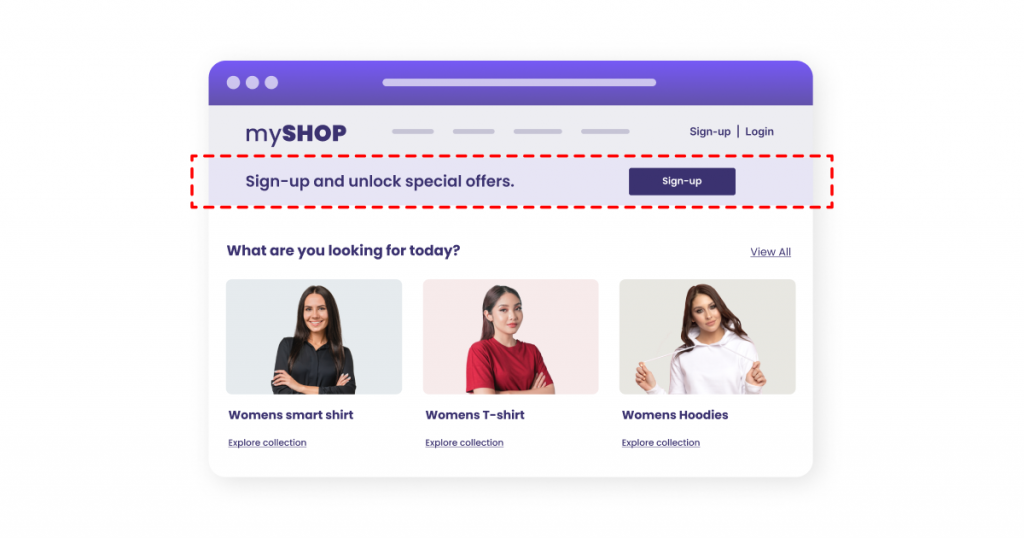
What does it do?
Personalize website banners for unknown users to boost user sign-ups.
Who is it for?
Users who have not signed up or are unknown users.
Where does it go?
On the home page above the hero banner.
Why is it important?
When users visit your platform, they visit as unknown or anonymous users. To engage them, you need to know more about them. Convert them into known users. One way of doing this is by having them sign up on your platform. Personalizing the website banner catches the user’s attention through targeted offerings which can boost your chances of user registrations.
💡Pro tip:
97-98% of your website visitors are anonymous. Data from so many users can be valuable for your marketing campaigns. Collect zero-party user data through web personalization for more intimate engagements down the line.
2. First purchase

What does it do?
Nudge users toward their first transaction.
Who is it for?
Users who have signed up but have not made a purchase.
Where does it go?
On the home page below the hero banner.
Why is it important?
The ultimate goal of having registered users is to get them to become paying customers. Some users do that without any nudges, but most users need that extra push to goad them into making a purchase. personalized banners with attractive discounts can act as the final nudge for users to take an action and make a purchase.
💡Pro tip:
Have a killer landing page copy and an actionable CTA.
3. Search abandonment
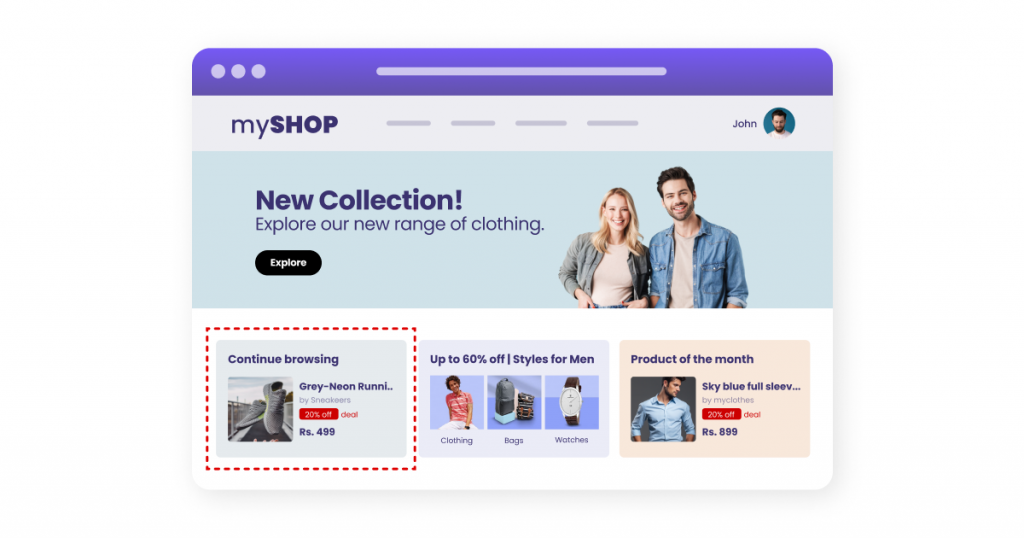
What does it do?
Nudge users to purchase products viewed or browsed.
Who is it for?
Users who have viewed a specific product or category of products.
Where does it go?
On the home page.
Why is it important?
Like many of us, online users also resort to window shopping. Some may lack the motivation to buy or take any sort of action. After having browsed for a while, they abandon the platform. As a brand, you are losing out on potential revenue from these users. To draw them back, you personalize elements of your homepage to remind users what they’re leaving behind, recommend alternative products, and incentivize their orders.
💡Pro tip:
Before you give them a reason to stay, use all the channels at your disposal to tell the users why they should come back to you but without spamming them.
4. Cart abandonment

What does it do?
Remind users of items they left behind in the cart.
Who is it for?
Users who have added items to their cart but have not completed the purchase.
Where does it go?
On the homepage.
Why is it important?
It’s a common practice for users to add products to your cart only to back out and forget about it. Many abandon a cart due to different reasons. 71.82% of users across the world abandon their cart. Web personalization smartly incentivizes such users to pick up where they left off and complete the purchase.
💡Pro tip:
Incentives for users could include offering complementary products, free shipping, or discount codes.
5. Referral
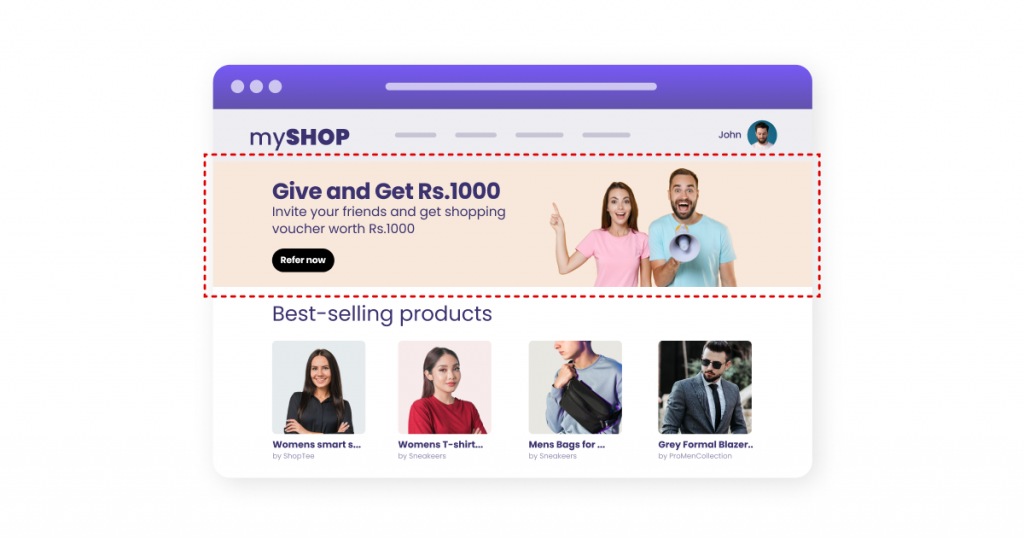
What does it do?
Acquire new users through a referral program for existing customers.
Who is it for?
Users who have made a purchase in the last 15 days.
Where does it go?
On the homepage after user login, within the user profile or a scrolling banner.
Why is it important?
Because referrals improve footfalls and redirect more users to the platform, existing customers need strong incentives to refer your platform to potential users. Referrals are terrific because they are easily measurable, and leads have a 30% higher conversion rate when generated from referrals than leads from other marketing channels. The top three advantages of referrals are store credit, loyalty, higher customer lifetime value, and higher spending rate.
💡Pro tip:
Incentivize referrals by offering your customers store credit, gift cards, and percent discounts.
6. Product recommendations

What does it do?
Recommend products based on user actions and preferences.
Who is it for?
Users who have purchased a product in the last 30 days.
Where does it go?
On the home page below the personalized banner.
Why is it important?
You’d be startled to know that in an era of privacy, 91% of consumers will willingly share first-party user data with a company if they get precise product recommendations and a seamless user experience in return. Imagine the accuracy of conversions that stem from suggesting products to users based on the data they consensually gave you in the first place. Whether it is the bespoke experience for users or the seasoned leads for brands, web personalization is a win-win for both parties.
💡Pro tip:
A strong product catalog that is elaborate and up-to-date is paramount to strong recommendations because the catalog can feed information to the recommendation engine, and the recommendation engine can fetch what’s valuable for the user. For example, anybody who buys a smartphone will be shown suggestions for smartphone cases. Chatbots are also a great way to offer tailored recommendations.
7. Drive user loyalty
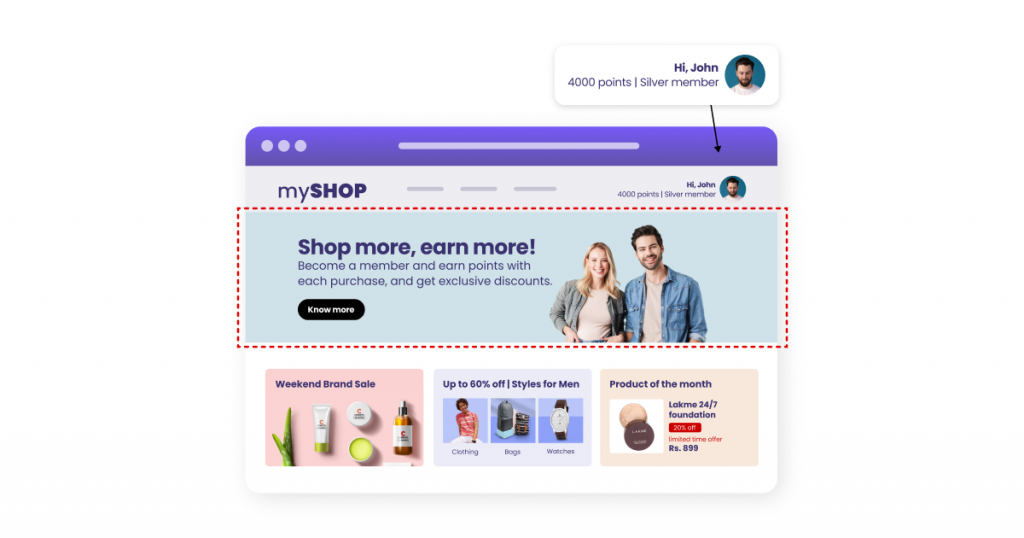
What does it do?
Gamify elements to increase repeat purchases.
Who is it for?
Users who have made 5+ purchases in a month.
Where does it go?
On the homepage near user login details.
Why is it important?
Gamification is the addition of gaming elements to non-gaming environments like websites, apps and other systems. The top loyalty programs offer gamified rewards and tailor them to individual customers’ preferences. One strategy is doling out rewards in a customer’s preferred product category. Another strategy is to reward higher levels of loyalty, such as repeat purchases within a certain time frame or reaching a certain order value. Referral programs that reward customers for every successful referral boost customer retention and engagement.
💡Pro tip:
Offer unique rewards with intrinsic value instead of just free stuff. For example, users unlock early access to the latest products.
8. Replenishment
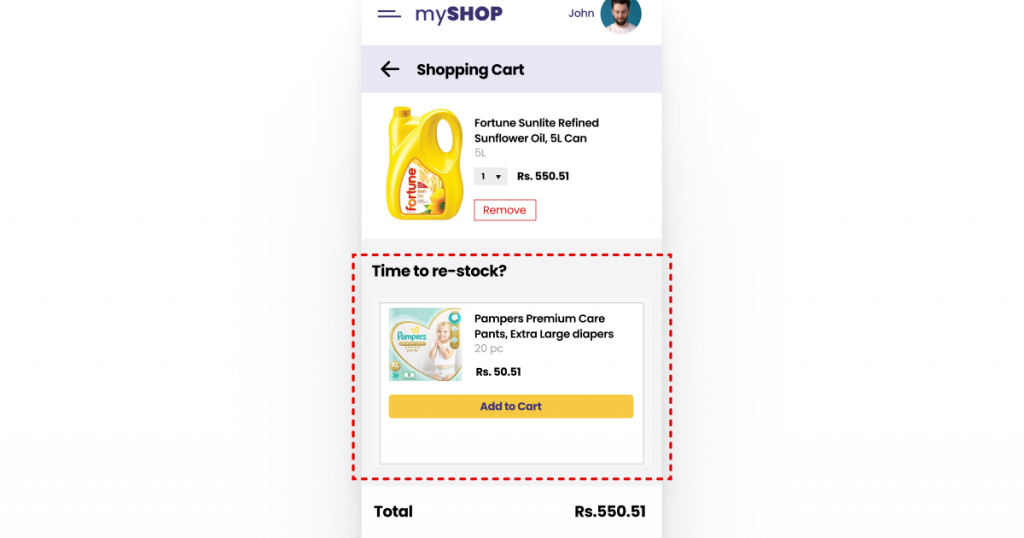
What does it do?
Remind users to re-stock purchased items.
Who is it for?
Users who purchase products every 15 days.
Where does it go?
On the checkout page.
Why is it important?
Cooking oil, shaving cream, coffee powder, medicines and peanut butter are some of the items that we frequently buy regularly. What e-Commerce companies do is leverage web personalization to periodically remind users to re-stock before they run out of supplies, turning their purchases into a purchase cycle. This ensures continued engagement with users who might churn or go into hibernation.
💡Pro tip:
Use user attributes such as gender and age or custom attributes like buyer behavior to suggest an item that has the highest chance of converting. For a 31-year-old mother who shops for diapers, nail clippers, and smartphone covers, diapers are likely to run out faster and hence, the ideal choice in her case.
9. Location-based offers

What does it do?
Personalize banner based on user location.
Who is it for?
Users in a specific location.
Where does it go?
On the homepage.
Why is it important?
When your favorite foreign coffee brand starts selling in your local area, you would want to know, wouldn’t you? e-Commerce companies detect your current whereabouts to notify you of products or services that are available in your area. An ignorant customer means lost revenue. Location as an attribute can apprise users of free shipping, the newest products, and special offers.
💡Pro tip:
Not just location, use the local weather to predict needs and provide apt suggestions. For example, “Heavy snowfall is expected around 5 pm. Here is a pair of boots that will help you get through your day”.
What are examples of website personalization in e-Commerce?
Here are a couple of notable e-Commerce companies that are acing website personalization.
Amazon
Amazon is an industry titan and one of the pioneers of web personalization. Using its proprietary personalization engine, Amazon wields web personalization to its advantage, so much so that no two Amazon users will have the same homepage. To this day, nearly 35% of its sales stem from personalized content.
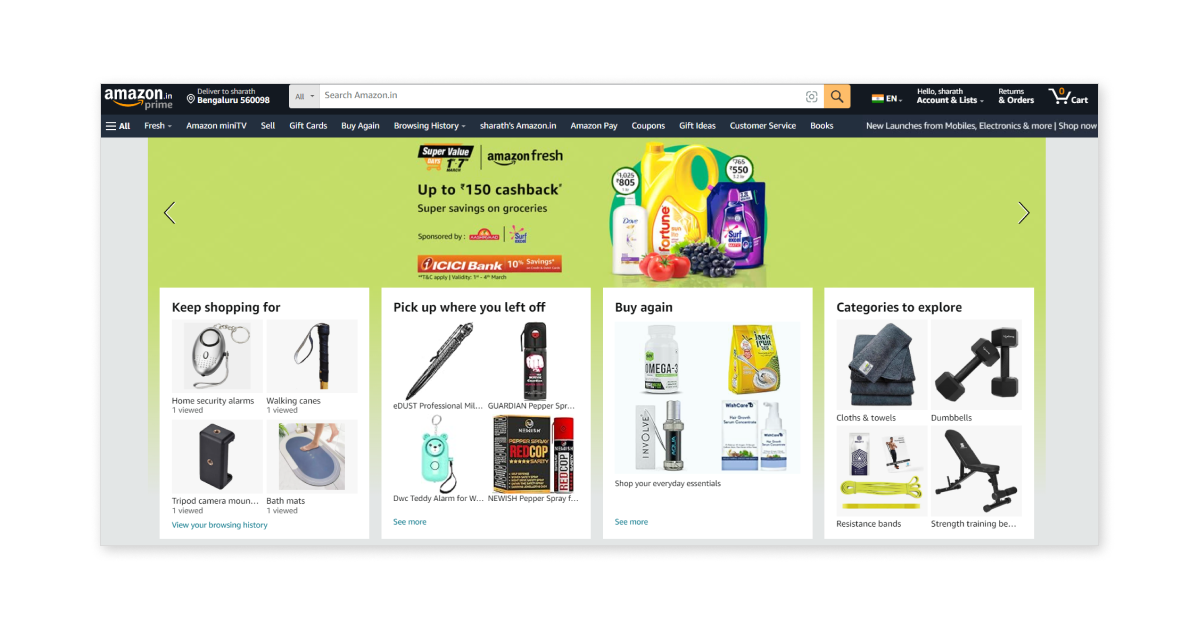
Amazon’s homepage is a prime example of personalization done right. The page is tailored to users’ preferences, browsing history, and purchases. From product recommendations to targeted promotions, Amazon ensures that every element on the page is relevant and engaging for the individual user. This level of personalization not only enhances the user experience but also drives sales and customer loyalty.
Starbucks
Starbucks is all about personalization. From coffee to the coffee experience, Starbucks believes in bespoke customer service. It is renowned for its loyalty programs, which entail free drinks, upgrades, birthday beverages, and gold memberships to privileged customers. The level of personalization Starbucks weaves into its buying experience is noteworthy and often replicated by other brands.

Starbucks takes personalization a step further. Users can customize their drinks, save their favorite orders, and earn reward points with each purchase. They also use location data to send personalized offers and promotions when users are near a Starbucks store. By integrating personalization across multiple touchpoints, Starbucks creates a seamless and engaging customer experience that keeps users returning for more.
These examples demonstrate how personalization can be used to create a more engaging and memorable user experience.
What does a personalized website look like?
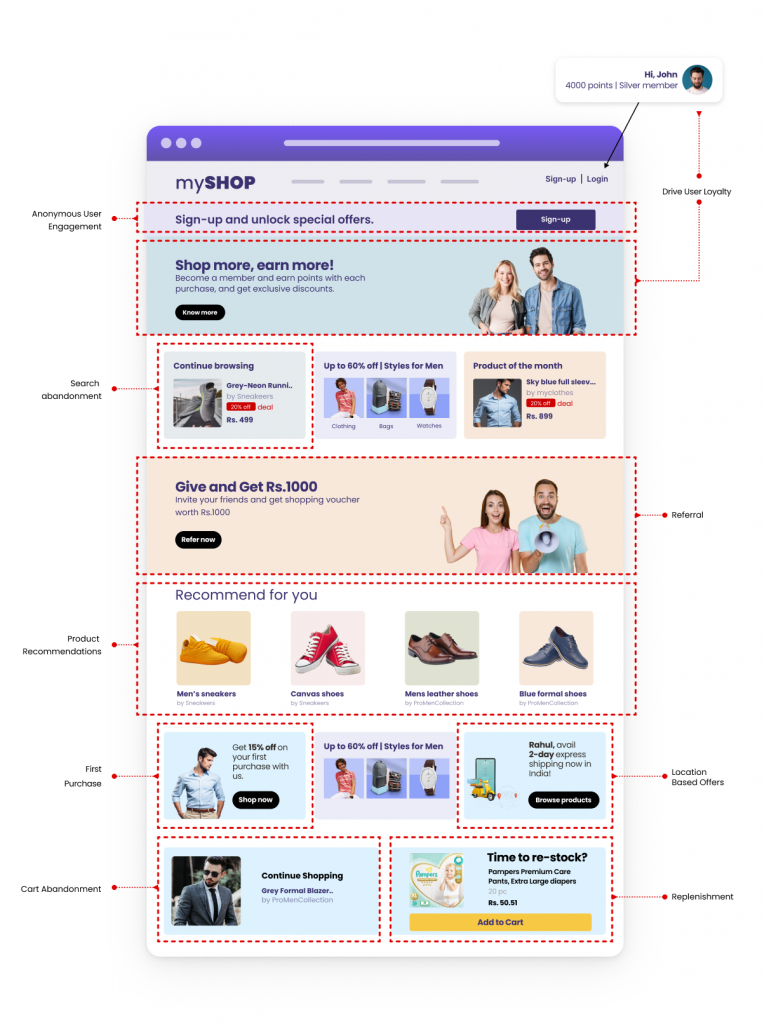
Closing thoughts.
Web personalization has evolved beyond more than just a stratagem. And not just for e-Commerce companies but for businesses of all shapes and sizes across verticals. Brands have embraced website personalization because a website is perhaps their biggest marketing asset, with an open rate of 100%.
But merely implementing web personalization doesn’t cut it. You have got to get it right. For that, you need the right tools to enable you to take your personalization efforts to new heights. As a brand, you want to maximize your personalization efforts to maximize revenue. WebEngage has a long history of helping brands do just that and more. To understand how web personalization with WebEngage can elevate your brand game, book a demo today!

































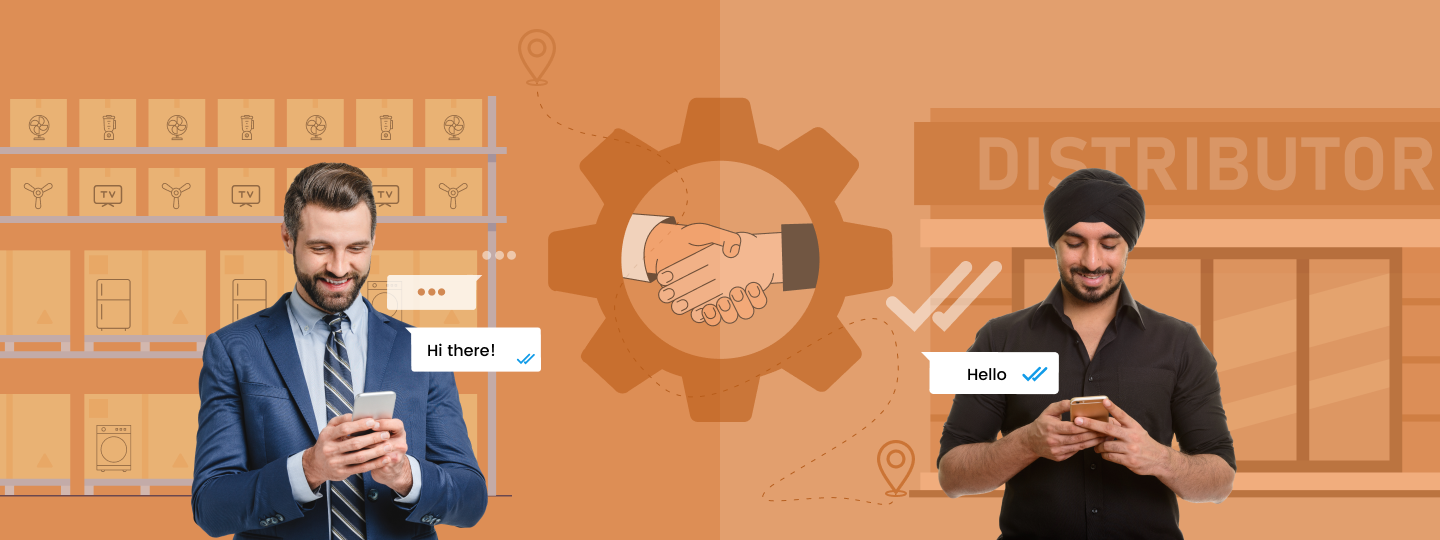
 Surya Panicker
Surya Panicker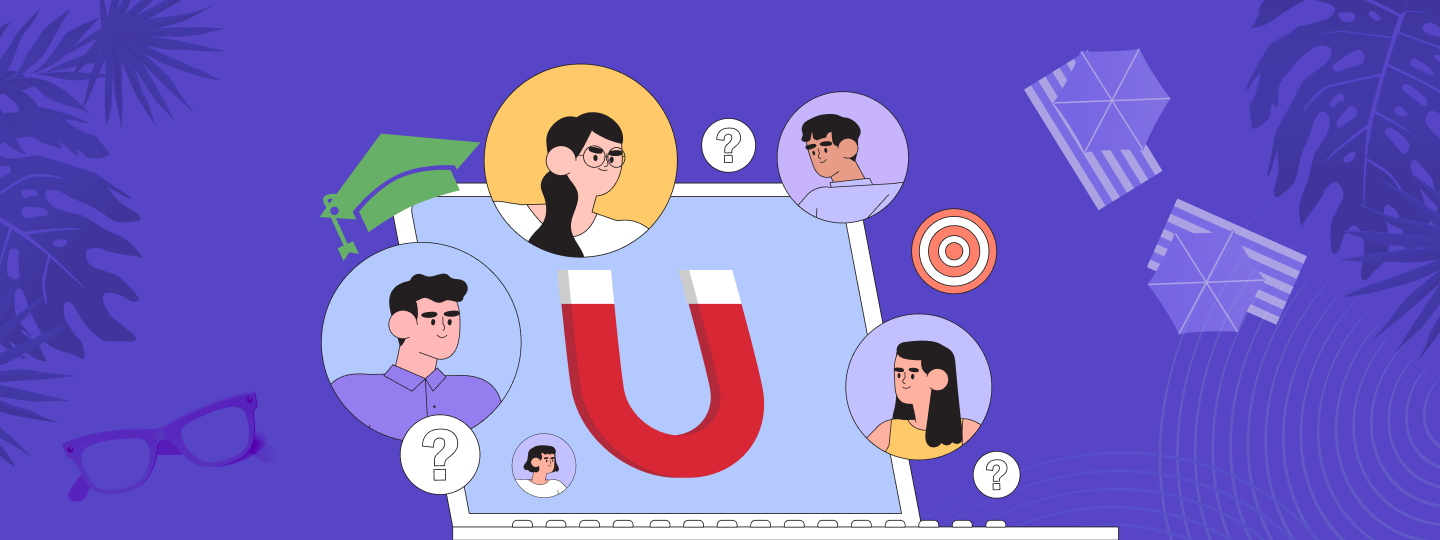
 Vanhishikha Bhargava
Vanhishikha Bhargava
 Prakhya Nair
Prakhya Nair